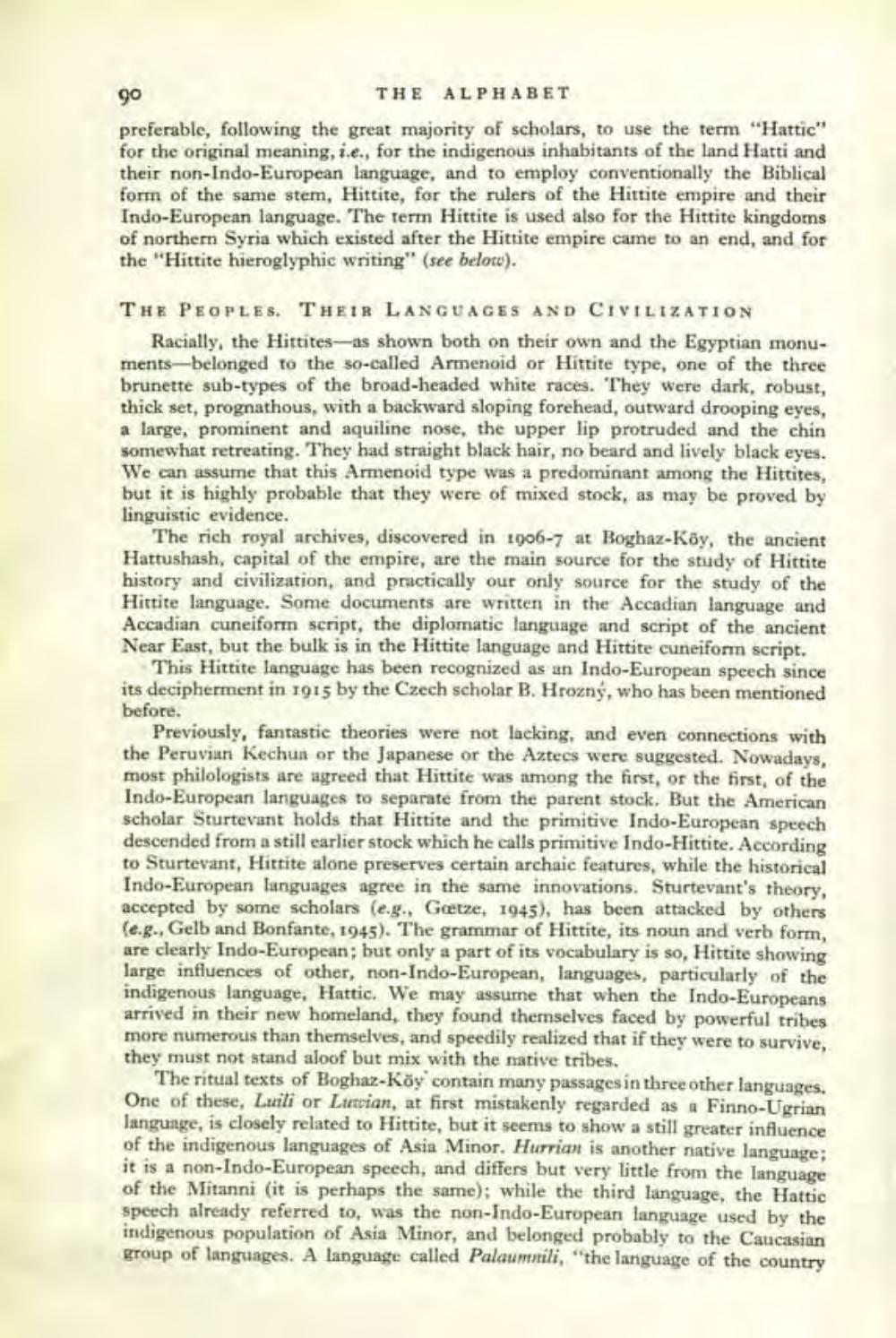________________
go
THE ALPHABET preferable, following the great majority of scholars, to use the term "Hattic" for the original meaning, i.e., for the indigenous inhabitants of the land Harti and their non-Indo-European language, and to employ conventionally the Biblical form of the same stem, Hittite, for the rulers of the Hittite empire and their Indo-European language. The term Hittite is used also for the Hittite kingdoms of northern Syria which existed after the Hittite empire came to an end, and for the "Hittite hieroglyphic writing" (see below).
THE PEOPLES. THEIR LANGUAGES AND CIVILIZATION
Racially, the Hittites-as shown both on their own and the Egyptian monuments-belonged to the so-called Armenoid or Hittite type, one of the three brunette sub-types of the broad-headed white races. They were dark, robust, thick set, prognathous, with a backward sloping forehead, outward drooping eyes, a large, prominent and aquiline nose, the upper lip protruded and the chin somewhat retreating. They had straight black hair, no beard and lively black eyes. We can assume that this Armenoid type was a predominant among the Hittites, but it is highly probable that they were of mixed stock, as may be proved by linguistic evidence.
The rich royal archives, discovered in 1906-7 at Boghaz-Köy, the ancient Hattushash, capital of the empire, are the main source for the study of Hittite history and civilization, and practically our only source for the study of the Hittite language. Some documents are written in the Accadian language and Accadian cuneiforin script, the diplomatic language and script of the ancient Near East, but the bulk is in the Hittite language and Hittite cuneiform script,
This Hittite language has been recognized as an Indo-European speech since its decipherment in 1915 by the Czech scholar B. Hrozny, who has been mentioned before.
Previously, fantastic theories were not lacking, and even connections with the Peruvian Kechun or the Japanese or the Aztecs were suggested. Nowadays, most philologists are agreed that Hittite was among the first, or the first, of the Indo-European languages to separate from the parent stock. But the American scholar Sturtevant holds that Hittite and the primitive Indo-European speech descended from a still earlier stock which he calls primitive Indo-Hittite. According to Sturtevant, Hittite alone preserves certain archaic features, while the historical Indo-European languages agree in the same innovations. Sturtevant's theory, accepted by some scholars (e.g., Geetze, 1945), has been attacked by others (e.g., Gelb and Bonfante, 1945). The grammar of Hittite, its noun and verb form, are clearly Indo-European; but only a part of its vocabulary is so, Hittite showing large influences of other, non-Indo-European, languages, particularly of the indigenous language, Hattic. We may assume that when the Indo-Europeans arrived in their new homeland, they found themselves faced by powerful tribes more numerous than themselves, and speedily realized that if they were to survive, they must not stand aloof but mix with the native tribes.
The ritual texts of Boghaz-Köy contain many passages in three other languages. One of these, Luli or Lucian, at first mistakenly regarded as a Finno-Ugrian language, is closely related to Hittite, but it seems to show a still greater influence of the indigenous languages of Asia Minor. Hurrian is another native language: it is a non-Indo-European speech, and differs but very little from the language of the Mitanni (it is perhaps the same); while the third language, the Hattic speech already referred to, was the non-Indo-European language used by the indigenous population of Asia Minor, and belonged probably to the Caucasian group of languages. A language called Palaumili, ''the language of the country




